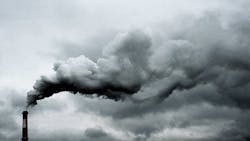EPA's Toxic Emissions Ruling Puts Chemical Manufacturers on Notice
The U.S. Environmental Protection Agency finalized an air-monitoring ruling under the Clean Air Act April 9 that will result in about $1.8 billion in compliance costs for the U.S. chemical industry.
The EPA ruling impacts more than 200 U.S. chemical plants – including those located in communities along the Texas Gulf Coast and Louisiana referred to as “cancer alley” – that produce ethylene oxide (EtO), chloroprene, benzene, 1,3-butadiene, ethylene dichloride and vinyl chloride.
As part of the final rule, the agency also is issuing new emissions limits for dioxins and furans.
When fully implemented, the final rule will cut hazardous air pollution by about 6,200 tons a year. The rule will also reduce more than 23,000 tons of smog-forming volatile organic compounds each year, the EPA said.
To meet the EPA’s requirements, plants will need to take various corrective actions, including improvements to the efficiency of flares used for pollution control. The EPA also is finalizing stronger standards for heat exchange systems, process vents and storage vessels.
The EPA calculated the costs to comply as part of its regulatory impact analyses. From 2024-2038, the plants impacted by the ruling can expect to pay a total of $150 million a year. The annual costs include the value of product recovery, the EPA said.
The agency noted that most of the facilities covered by the final rule are “owned by large corporations” and that the cost of implementation “is less than 1% of their annual national sales.”
Following the announcement, the American Chemistry Council issued a statement saying the EPA’s toxic exposure calculations for EtO using the Integrated Risk Information System (IRIS) as a benchmark are flawed and criticized the agency for eliminating provisions that allowed for “delay of repair provisions” to fix small leaks.
“This IRIS value defies reason—it is 23,000 times lower than naturally occurring levels found in the human body,” ACC noted in a prepared statement. “Some of the new restrictions threaten to affect the production of chemistries that are needed for countless everyday products and are used in key industries, including agriculture, healthcare, semiconductors, and electric vehicle batteries. Unfortunately, the value’s continued application in this rule along with EPA’s reliance on outdated emissions data has led to a final rulemaking based on inflated risks and speculative benefits.”
When reached for comment, the Vinyl Institute, which represents manufacturers of vinyl and vinyl chloride, said the organization and its members were still reviewing the final rule.
Related Articles:
‘Cancer Alley’ Prompts Federal Lawsuit Against Chemical Makers Dupont, Denka
Final EPA Rule on Ethylene Oxide Emissions Standards for Sterilization Facilities (Healthcare Purchasing News)
Campbell Soup Sued for Polluting Maumee River and Ultimately Lake Erie (Food Processing)
Monitoring Requirements
The EPA’s ruling specifically targets fenceline monitoring, which involves measuring pollution levels in the air around the perimeter of a facility. The standard requires owners and operators to ensure that levels of the six pollutants remain below a specified action level.
Facility owners and operators impacted by the ruling will have some flexibility on the type of measures they take to remain below the action level, the EPA said.
For each chemical, if the annual average concentration at the fenceline is higher than the action level for the chemical, the company must determine the cause and make necessary repairs. The final action levels vary depending on the chemicals and type of source emitting them. For EtO, facilities must remain below 0.2 micrograms per cubic meter of air.
For chloroprene monitoring, the EPA has issued two fenceline monitoring action levels – one at 0.8 micrograms per cubic meter and one at 0.3 micrograms for neoprene production to further protect against elevated risks from those facilities.
The EPA also is requiring that fenceline monitoring for chloroprene at neoprene production facilities begin 90 days after the effective date of the rule. Producers of the remaining five chemicals have two years to begin fenceline monitoring rather than the one-year rule that it previously proposed to allow facilities to develop compliance plans and resources.
Among the facilities that the EPA plans to target is a Denka Performance Elastomer plant in Laplace, Louisiana, the Washington Post reported. The EPA sued Denka in 2023 to force the company to curb chloroprene emissions, which reached 15 times the level the EPA considers safe for lifetime exposure.
Lawmakers and public health advocates say holding chemical manufacturers accountable for toxic releases will have a far-reaching impact on environmental justice efforts.
“Today marks a victory in the pursuit for environmental justice, with the final rule poised to significantly reduce the toxic air pollution that harms communities in Texas’s Gulf Coast, Louisiana’s Cancer Alley, and throughout the U.S.,” said Patrice Simms, vice president for healthy communities at the environmental nonprofit Earthjustice. “Setting protective air standards for over 200 chemical plants and requiring fenceline monitoring for some of the most toxic emissions shows a commitment to protecting public health. We look forward to the EPA’s swift implementation and rigorous enforcement of this critical rule.”
About the Author
Jonathan Katz
Executive Editor
Jonathan Katz, executive editor, brings nearly two decades of experience as a B2B journalist to Chemical Processing magazine. He has expertise on a wide range of industrial topics. Jon previously served as the managing editor for IndustryWeek magazine and, most recently, as a freelance writer specializing in content marketing for the manufacturing sector.
His knowledge areas include industrial safety, environmental compliance/sustainability, lean manufacturing/continuous improvement, Industry 4.0/automation and many other topics of interest to the Chemical Processing audience.
When he’s not working, Jon enjoys fishing, hiking and music, including a small but growing vinyl collection.
Jon resides in the Cleveland, Ohio, area.

